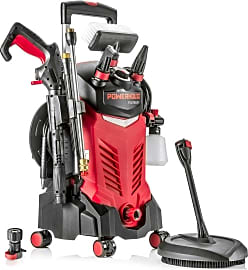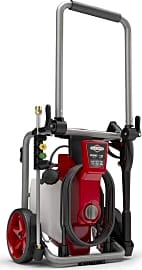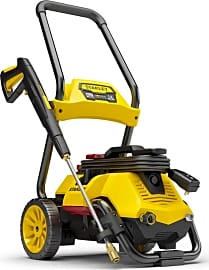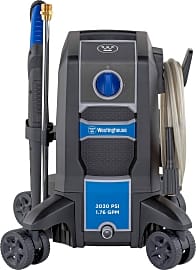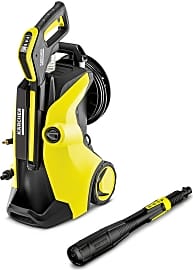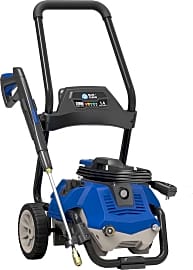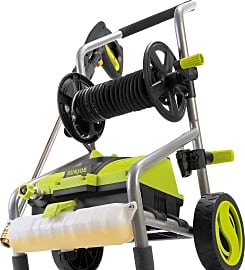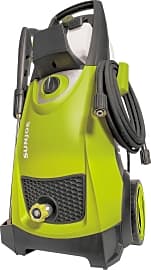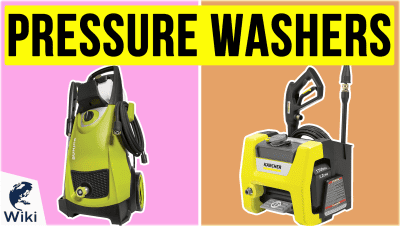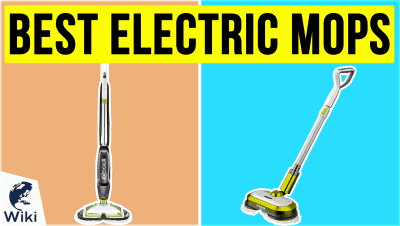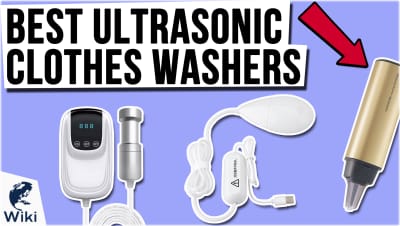The 10 Best Electric Pressure Washers

This wiki has been updated 35 times since it was first published in January of 2017. Good for washing down garage floors, decks, patios, vinyl siding, lawn furniture, and a variety of other surfaces, one of these electric pressure washers can significantly reduce the time and effort required to maintain your property. More affordable and less messy than their gasoline-powered counterparts, they offer plenty of power to help you tackle the toughest of cleaning projects. When users buy our independently chosen editorial selections, we may earn commissions to help fund the Wiki.
Editor's Notes
July 23, 2020:
Electric pressure washers hold several advantages over their gas-powered counterparts. They're smaller, easier to maneuver due to their lighter weights, and they start up almost immediately and shut down just as quickly once their triggers are released. While they should not be used for something like stripping paint, they are good for most other applications when it comes to washing away dirt, grime, oils, and stains from various surfaces.
This year, we've added the Briggs & Stratton S2000 due to its brushless induction motor, welded steel frame, and overall durability. It has also passed military-grade drop testing.
Both the Stanley SLP2050 and AR Blue Clean AR2N1 can be used on and off their mobile carts. I can't tell you how many times I've tried washing my windows using a garden hose wand without being able to maneuver around tight spaces. It wasn't much fun. By contrast, having the ability to carry the tool around by hand and push it around a large property is a huge benefit. Like many others on the list, both models also features a convenient auto stop function whereby power to the motor and pump is switched off when the nozzle trigger is released. This ultimately helps to save energy, while also extending each tool's life expectancy.
We've also added the Westinghouse EPX3000 and Yard Force YF2200BL, both of which offer a low center of gravity for stability on uneven surfaces while the latter option offers a roll-cage design for withstanding impacts.
Finally, the updated Karcher K5 Premium model is equipped with a water-cooled motor and LCD with push-button controls for its pressure output and soap dosing.
June 08, 2019:
Selected consumer-grade models that offer a range of pressures suitable for a variety of cleaning tasks. You wouldn't want to strip paint with most of our selections, but they can handle most other around-the-house cleaning jobs. If you're shopping for your first electric pressure washer, you might be surprised by the price range of our selections. They're generally less expensive than gas-powered washers, and you're sure to find one that suits your cleaning needs and your budget. Users love their portability and quiet operation--some of our selections automatically shut off the motor when the trigger is released, making them much quieter than their gas-operated cousins.
One of the features you'll want to pay close attention to is the hose. Stiff, kink-prone hoses are a common complaint among users of electric pressure washers. That's why we were pleased to add the Powerhouse Platinum as a top choice. Based on customer feedback, the manufacturer included a hose that is softer and less prone to kinks than its earlier models.
Also added the Ryobi AR2N1 as a top selection from a respected company. It offers a good combination of water output volume and pressure--a desirable trait in pressure washers. Removed the Powerhouse Force 1800 and the Ivation 9178L due to concerns about their availability.
Special Honors
Kranzle KWS700TS Good for commercial and industrial use, the Kranzle KWS700TS is a cold water stationary electric pressure washer powered by a 25-amp, single phase electric motor that generates 2,400 PSI with a flow rate of up to five gallons per minute. Its internal pump is capable of running dry and on bypass longer than many of its counterparts for improved durability and longevity. Some of its additional features include auto on/off gun jet controls and variable 30-90 second delay. It's also equipped with a safety shutoff function after 20 minutes. Its stainless steel frame is both wall- and shelf-mountable. kranzleusa.com
How Pressure Washers Work
Electric washers plug into standard outlets and they can be supplied with common tap water.
At the foundation of every pressure washer is a motor. Whether pneumatic, hydraulic, internal combustion-based, or electric, this motor's sole purpose is to drive a high-pressure water pump. From there, water is forced through a hose under pressure, and out through a nozzle, when released by a user-controlled switch.
Most modern pressure washers have switches with a pistol grip, which requires a user to pull a trigger built into the washer's handle to release pressurized water.
Advancements in nozzle technology greatly improved the effectiveness of pressure washers. Most nozzles attach directly to the trigger gun and shape the pattern of the water output. Identifying the correct nozzle for an application is important. For cleaning and stripping a flat surface, a fan nozzle may be appropriate. Other applications may call for a narrow jet (cleaning sidewalk grooves), or low pressure and high flow (for washing cars).
For washers equipped with cleaning chemicals and detergents, there are nozzles that aid in the creation of foam. Some models also heat water, aiding in the cleaning of petroleum-based products and grease.
Electric washers plug into standard outlets and they can be supplied with common tap water. Today, these washers typically output pressures up to 2,000 pounds per square inch. Gas-powered washers can double that pressure output, but come with a number of safety concerns.
At the industrial end of the spectrum, the most powerful pressure washers can be used to cut metal and concrete. Some industrial pressure washers combine water and sand in a process called sandblasting to remove graffiti and strip and/or resurface concrete. Others are used to remove rubber from airport landing strips. The highest powered washers max out at pressures exceeding 25,000 pounds per square inch.
High Pressure Safety Concerns
Electric pressure washers should be handled carefully, as many can output water and other chemicals at pressures great enough to tear skin and cause serious injury. If a washer is improperly cleaned, particles ejected from the hose can be particularly harmful to those they strike. Washers may also kick up debris at high speeds, which can be hazardous.
For that reason, users should wear rubber-soled shoes for insulation and keep the cord away from standing water.
The combination of electricity and water is infamously deadly. For that reason, users should wear rubber-soled shoes for insulation and keep the cord away from standing water. If you must employ an extension cord, use only those rated for wet conditions.
Pressure washers cannot properly function without an adequate supply of water. Before purchasing one, make certain the pipe to which you plan to connect the washer can provide enough water. Otherwise, the pump elements can suffer cavitation damage.
If you are interested in using a cleaning chemical with your washer, first confirm that it is safe for use with the model you own. Misuse of cleaning chemicals can damage the pump. It is also important to choose an output pressure suitable for the job at hand. Using too much pressure can damage surfaces irreparably.
With respect to safety, electric pressure washers have an advantage over their gas-powered counterparts: they produce no exhaust. The exhaust from gas- and propane-powered washers makes them especially dangerous for use indoors.
A Brief History Of Electric Pressure Washers
German Alfred Karcher invented the high-pressure washer in 1950, and is often credited as the father of the modern pressure washer. Karcher's status is disputed by Frank Ofeldt, who claims he invented a steam powered pressure washer decades earlier in 1927.
Ofeldt discovered the cleaning potential of pressure washing by accident while working on a whisky still. Ofeldt inadvertently forced steam through a narrow hose at high pressure, and witnessed its effect on a grease-laden garage floor. From there, he worked to create the first steam pressure cleaners.
The commercial pressure washing industry took off in the early 1960s when Cat Pumps developed a piston pump that was significantly more durable than those that preceded it, and was capable of pressures up to 1,000 pounds per square inch.
By 1975 standard gas-powered commercial pressure washers boasted water pressures up to 3,000 pounds per square inch.
The automatic car wash industry used pressure washers in an unrelenting commercial setting that involved harsh temperatures and chemicals.
The automatic car wash industry used pressure washers in an unrelenting commercial setting that involved harsh temperatures and chemicals. Starting in the early 1980s, technological advances necessitated by the difficult conditions in car washes were incorporated in consumer pressure washers. Chief among those improvements was the ceramic plunger pump, which greatly improved the reliability of pressure washers. The early ceramic pressure pump operated for more than 2,000 hours with little maintenance, a durability record far better than those of its predecessors. The ceramic pump also improved the portability and safety of pressure washers, expanding their potential business applications. Additionally, the ceramic pump made it possible for a pressure washer to be powered by an electric motor.
The first electric washers were limited by the output of the standard household electrical outlet, which could hardly support 1,000 pounds per square inch of pressure. For comparison, similar gas models of the time could reach 3,000 pounds per square inch and beyond. This limitation, along with the United States National Electrical Code, which required all high-pressure washers to have ground fault circuit interrupter plugs, stunted the growth of the electric pressure washer. Adding electrical cords and the mandated breaker switches to pressure washers was costly, and many manufacturers instead chose to focus on gas-powered models.
Innovations like the turbo nozzle, which greatly improved the pressure of electric pressure washers, and the concurrent decrease in the cost of electrical components and increase in the cost of fuel, led to a resurgence in popularity of electric pressure washers. Today they are especially well-respected for their consumer applications and flexibility in household use.


